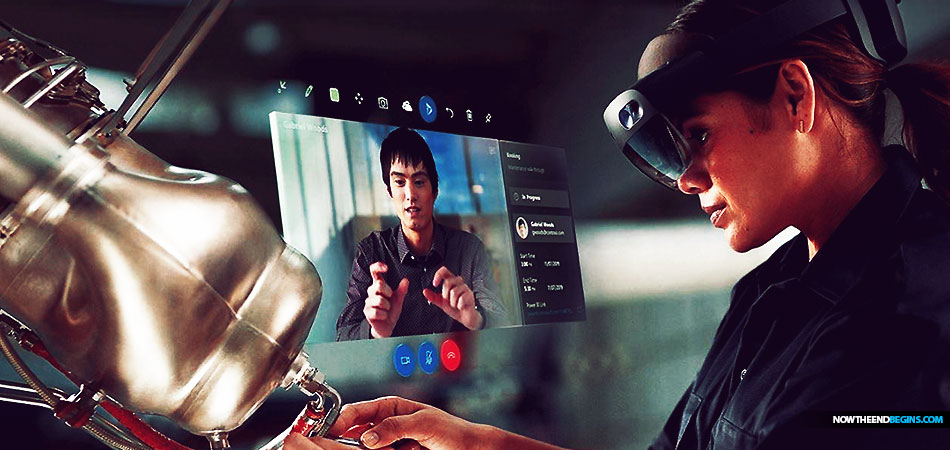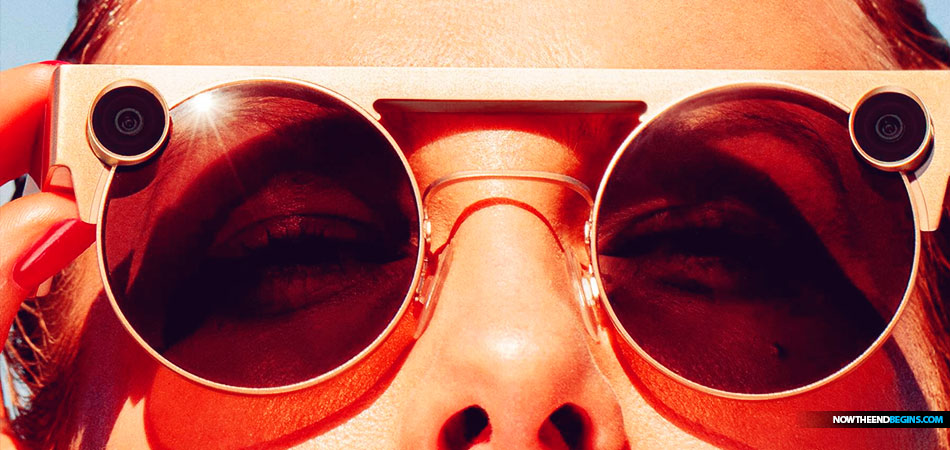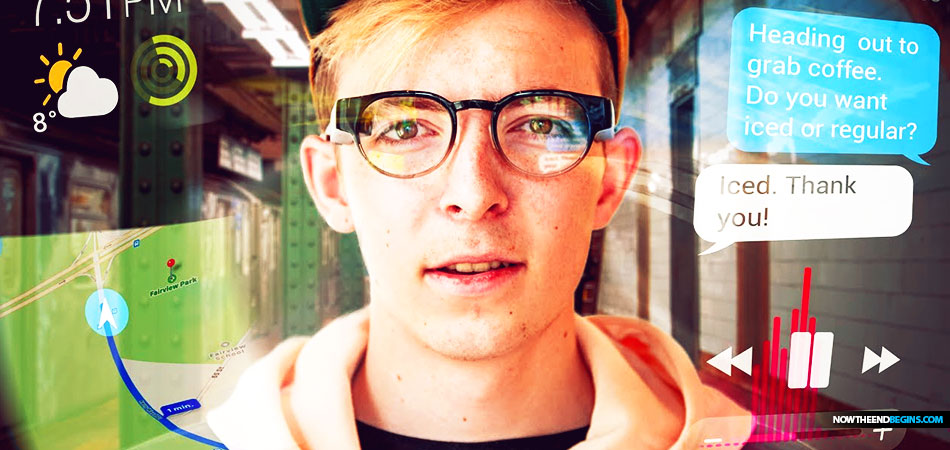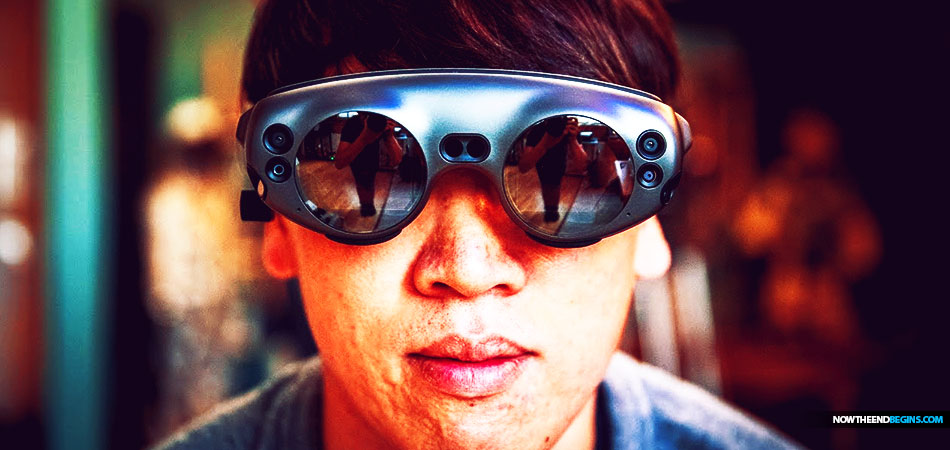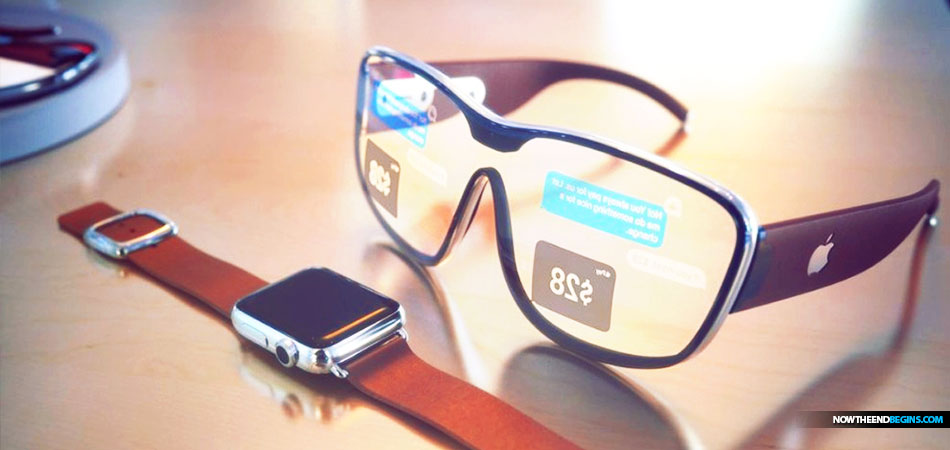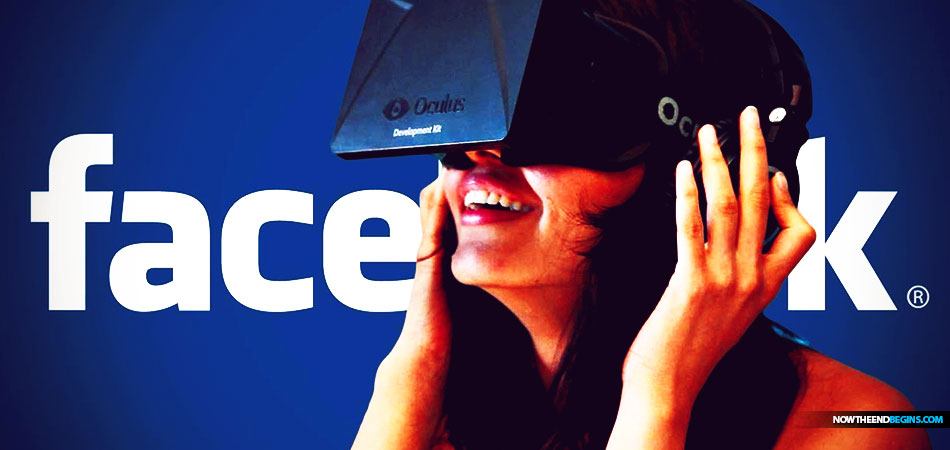Most of the biggest names in Big Tech are racing to create smart glasses that we wear everywhere and that may replace our phones.
We have consistently told you that the drive to full human microchip implantation comes in three stages, which are as follows:
- STAGE ONE: Getting the whole world in front of a computer. This was successfully accomplished in 1994 with the twin whammy of the release of the Internet for public use, and the stratospheric rise of Windows software in personal computing systems. This stage lasted from 1994 to 2007, when Apple was the first company to market with a successful mobile device, or smartphone as they are commonly called.
- STAGE TWO: Getting the computer on you. Now that the whole world was attached to personal computers and laptops, Stage Two is where the computer went from being in front of you to being on you. Stop anyone one the street and ask them to you show their mobile device, and you will see it is somewhere on their body. The stage began as previously stated in 2007 with the iPhone from Apple, and is currently coming to an end here now in 2019/2020. Stage Three is the third and final stage in this process.
- STAGE THREE: Getting the computer inside you. Augmented reality smart glasses, in all their varied mutations, are the bridge to human implantable microchips and computer processors. When this stage is fully realized, wearers of the smart glasses will be able to have full 3D interactions in the air as computers screens as we know them today will cease to exist. The technology that will be developed during this stage, 2020 – 2026/28, will include implantable devices that will supplement the smart glasses. This is where Augmented Reality and human implantable will merge .
All of this is the precursor to the coming One World System under Antichrist, and his Mark of the Beast. Now you can see that when the Mark is rolled out, it will not be some new thing that boggles people’s minds, no, just the opposite. When the Mark of the Beast comes along after the Pretribulation Rapture of the Church, the Mark will simply be the ‘latest and greatest’ piece of technology to a world that has already been using Augmented Reality systems and gotten used to seeing things in 3D.
There’s a race to replace our iPhones with smart glasses we wear everywhere
FROM CNBC: Microsoft, Amazon, Google, Snap, Facebook Apple, Magic Leap and others are all working on some form of smart glasses or headset that will change how we view the world around us. Instead of pulling a phone out of our pockets to talk to people or interact with apps, we may do these things simply by speaking to, and looking through, a set of glasses.
If glasses replace common gadgets like our phones or computer screens, it will mean big business to the company that comes out on top.
But we’re likely years away from that. Today, most AR headsets are too big, too expensive and simply too weird-looking to make sense for everyday use. That’s not keeping tech companies from trying though. Here’s where everyone stands right now.
Microsoft Advanced Augmented Reality Products
Microsoft is working on advanced augmented reality products. Its HoloLens 2 headset went on sale last week and a modified version is being tested by the Army to make soldiers more effective on the battlefield. Called IVAS, the Army’s version can overlay images like the positions of fellow soldiers and the enemy over the vision of the soldiers who wear the HoloLens headsets. And soldiers can use it for training to see how they performed during battle simulations.
It has commercial uses, too. HoloLens 2 is capable of displaying computer programs over your vision so you don’t always have to sit at a computer to do work. It can help workers in the field identify problems and make fixes without digging through manuals.
The HoloLens 2 is too big and at $3,500 too expensive for most consumers. But as technology progresses, these devices will only get smaller and more powerful.
Snap Spectacle 3 Glasses
Snap’s Spectacles 3 glasses, which go on sale this week for $380, let users snap pictures and videos of the world around them and then add augmented reality effects to those clips inside the Snapchat app.
You can’t currently see any information through the glasses themselves, but the company is reportedly working toward adding augmented reality into the frames. The Information’s report on Monday said Snap is building a “fourth-generation version of its Spectacles camera glasses, code-named Hermosa, with smart lenses capable of showing AR effects.”
Snap’s strategy has been different than those of Microsoft, Facebook and Magic Leap. It starts with glasses and plans to add a computer system later. The other companies have bulkier headsets with computers but haven’t sold glasses yet.
Google Glass
Google still sells its Google Glass product, which shows information, but not 3D augmented reality, to wearers. The original version, aimed at consumers, may have come too soon. People didn’t like that wearers of Google Glass were able to record them at any time, and Google eventually killed that model and focused on business use.
Google is still investing in the space and most recently launched a new version in May for commercial uses. Google’s Android platform on phones now supports augmented reality apps, too, which means it’s building a library of applications that could one day be used in more advanced versions of Google Glass.
Google Maps on Android and iPhone already has features that would be much more useful on a set of glasses, too. An augmented reality feature that rolled out in May overlays information, including walking directions, on top of the real world. It can show you which way to walk, when to take a turn and even when you’ve arrived at your destination when you hold up your phone.
While Google hasn’t publicly talked about new AR glasses yet, it’s obvious the company is building a foundation where AR makes more sense on our heads instead of on a phone.
Magic Leap
Magic Leap’s first headset launched in August 2018 and, like Microsoft HoloLens 2, is a relatively bulky headset that’s capable of showing games, 3D animations, virtual video screens and more, all in a digital world around you.
You can still see everywhere you walk, and anyone you’re talking to, but AR applications let you watch TV, work in computer programs and more, all while still seeing the normal world.
But like HoloLens 2, Magic Leap is expensive, with a starting price of $2,295. The company will need to make its product smaller and more affordable if it plans to attract a wide audience, and it will need to add more capabilities and applications. Apple’s iOS and Android already offer thousands of augmented reality apps for phones, which could easily land on headsets if and when they launch.
Apple Augmented Reality
Apple’s headset is reportedly set to launch in 2022, but the first model is the size of Facebook’s Oculus Quest virtual reality headset, according to The Information. But a smaller glasses-size version that it says is due to launch in 2023 may be more attractive to people, since that form factor will allow it to be worn all day instead of around the house.
Like Google, Apple’s iOS platform is already home to thousands of augmented reality apps. Apple probably added AR support to its iPhones and iPads in an effort to teach people more about the technology and show them how games and information will work once they’re overlaid in front of our faces. And like Google’s, this strategy helps it build a library of apps that would work on a future set of glasses.
Siri already works with wearable products like the AirPods and Apple Watch, allowing users to ask it for turn-by-turn directions, to play music and to transcribe messages all without picking up a phone. Those functions could all work on a set of smart glasses.
Facebook Oculus
Facebook’s strategy is different than almost everyone else’s. It currently sells virtual reality products that take you out of the real world and into a digital realm where you can’t see anything around you. But Facebook is also interested in augmented reality.
CNBC reported in September that Facebook has partnered with Ray-Ban parent company Luxottica to develop augmented reality glasses. It plans to launch the wearable, internally called Orion, between 2023 and 2025. They’re designed to take calls and let users stream video to other people. Hundreds of people are working on them. One area Facebook has struggled, however, is in getting them small enough for consumers to find appealing.
Like Apple, Facebook has an existing communications platform that could translate easily to a pair of glasses on our heads. Facebook Messenger and WhatsApp allow users to call or chat with one another, for example, and Facebook’s Portal products enable video chat across platforms.
Facebook already has developer tools for augmented reality, called Spark AR. Right now, it’s used for face tracking and effects inside video chats on Portal hardware but could theoretically be used one day on a set of smart glasses. And Facebook has a huge user base that includes 2.45 billion monthly active users who may be interested in smart glasses if it can sell them at an affordable price.
Amazon Echo Frames
Amazon hasn’t talked much about its own set of augmented reality glasses, but in September it announced a pair that show it’s interested in the space. The Echo Frames are currently just a set of regular glasses, but with a speaker and the Amazon voice assistant Alexa built in.
A user can speak to Alexa anytime. It can tell you the weather, place phone calls, give you a news briefing or anything else that an Amazon Echo can do, just on your head. Amazon could improve these glasses by adding AR, but it would need to add screens that help display that information in front of you.
Amazon also has a lot of services that could easily apply to AR glasses. Prime Video could show movies and TV shows through a set of future Echo Frames if Amazon decides to build such a pair, for example. Or a user might shop through Amazon and browse through goods without ever pulling out a phone. READ MORE
5 BEST AUGMENTED REALITY TECH
Interest in augmented reality (AR) is exploding as innovators explore the business relevance and roles AR can play in workforce enablement and customer experience and interaction. This emerging technology holds tremendous promise for changing the way businesses operate.
